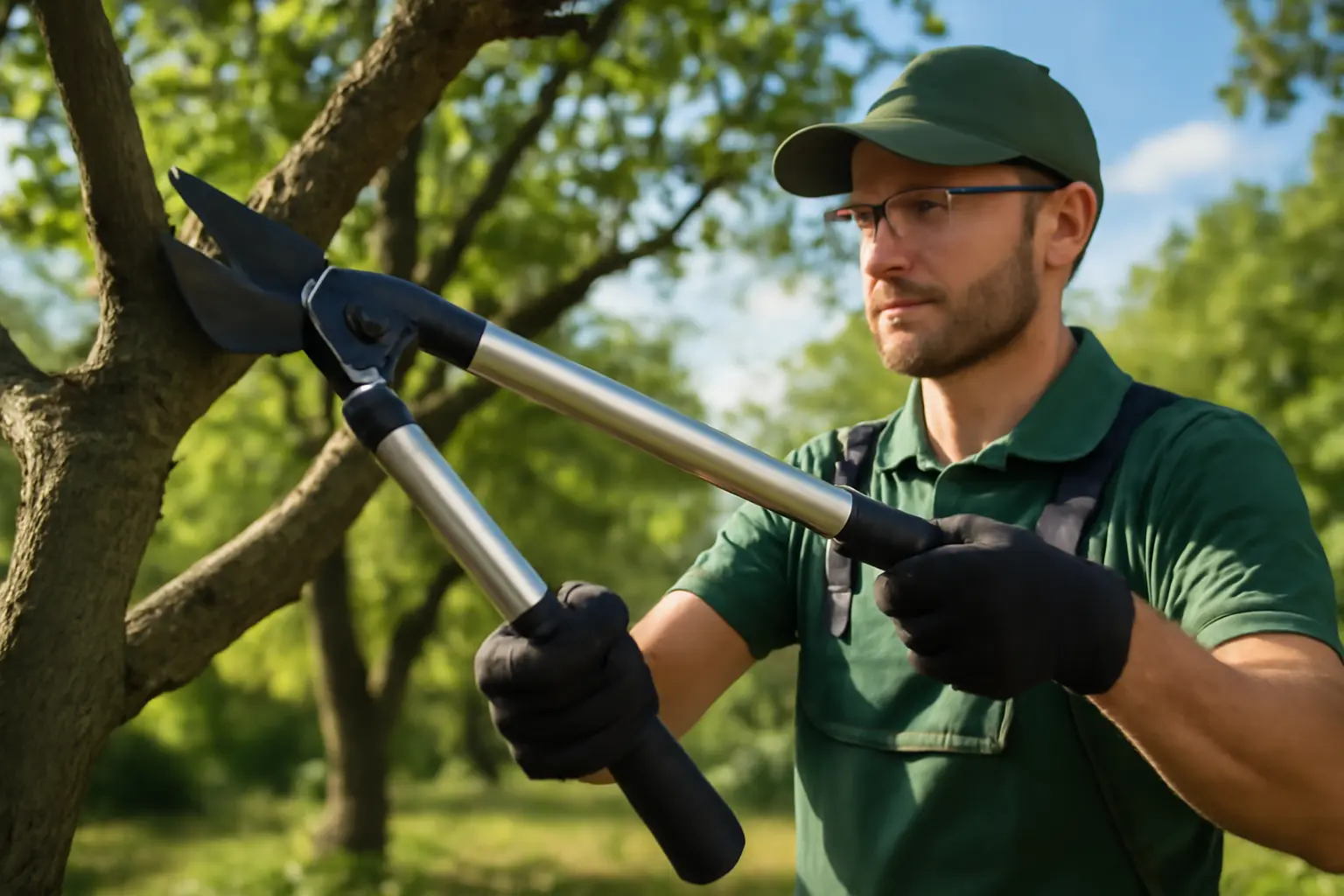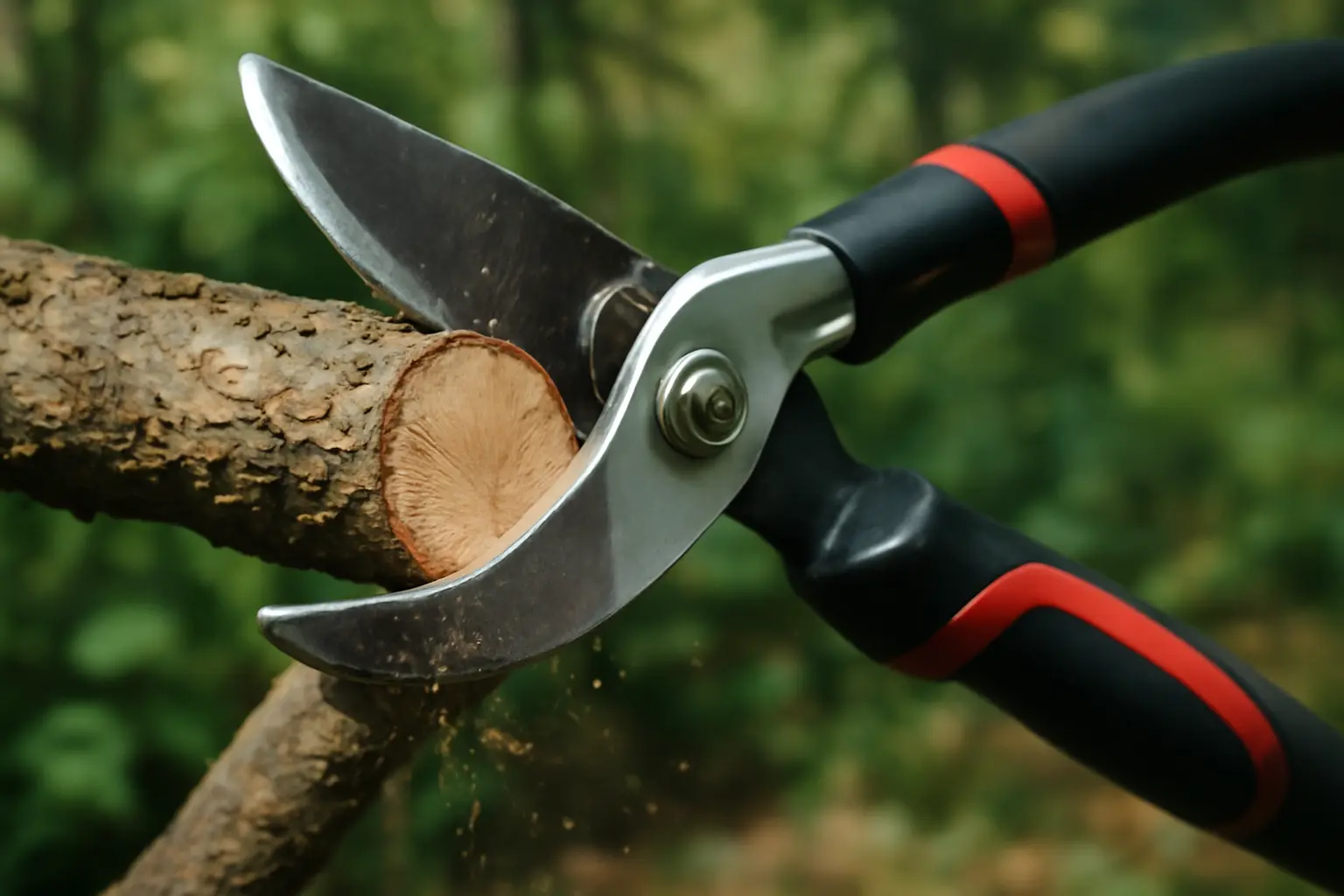
1. Understanding Pruning Shears for Thick Branches
Cutting thick branches presents common difficulties including blade slippage, excessive hand fatigue, and uneven cuts that can damage both tool and plant. Specialized shears mitigate these problems by providing sharper edges, better grip, and optimized ergonomics.
Understanding these differences helps in choosing the right tool:
– Regular pruning shears suit small to medium branches, usually under ¾ inch in diameter.
– Pruning shears for thick branches are built for limbs over ¾ inch, sometimes up to 1 ½ inches or more.
For example, if you are trimming mature oak limbs or thick rose branches, a heavy-duty shear with a locking mechanism ensures cleaner cuts and prevents damage to the plant tissue, promoting healthier regrowth. Selecting appropriate shears contributes significantly to maintaining garden health and reduces tool wear over time.
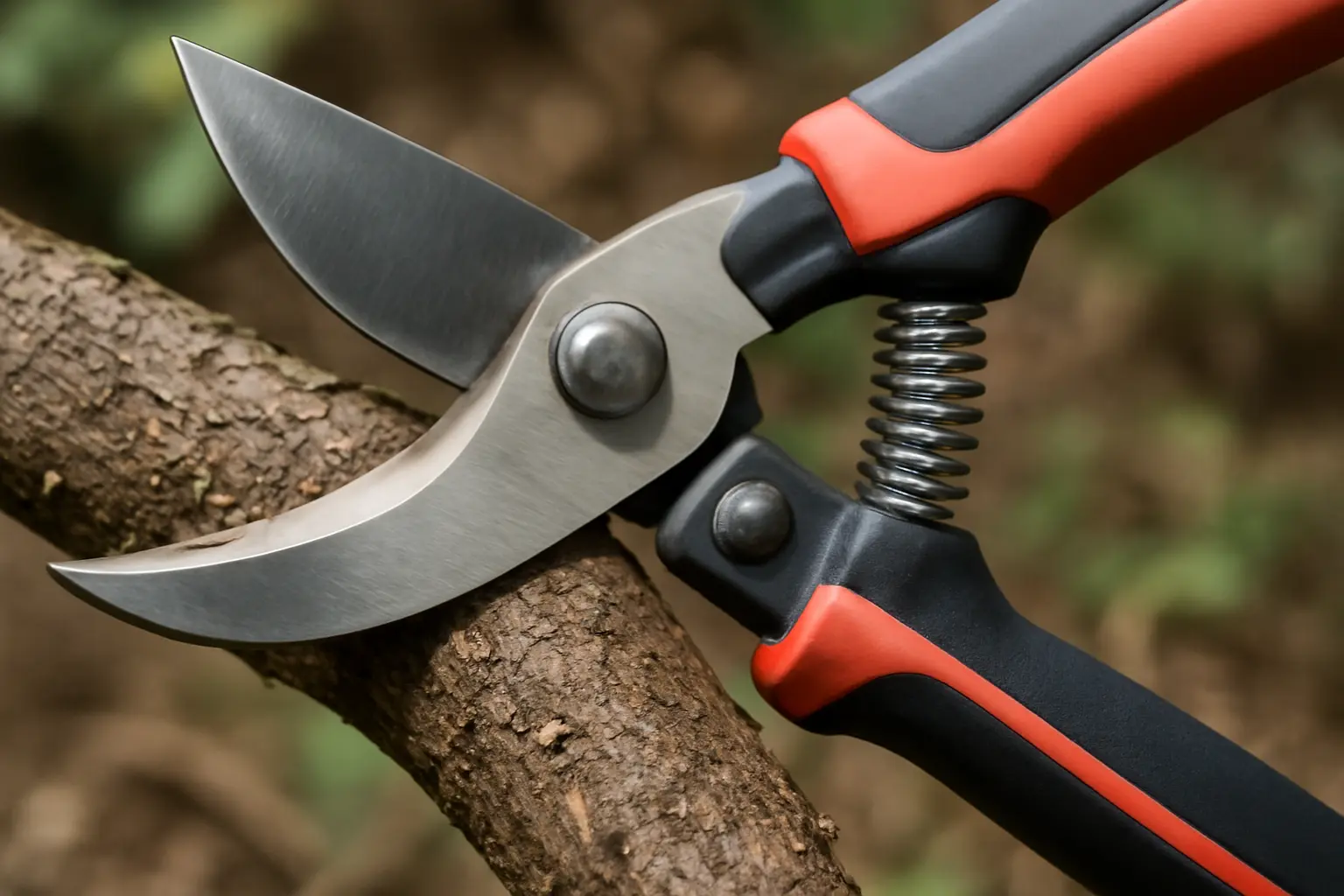
2. Key Features that Make Shears Effective for Thick Branchs
Branch diameter capacity is vital; pruning shears designed for thick branches typically accommodate cuts of 1.5 inches or more. Exceeding this limit risks ineffective cuts or tool damage. For thick wood, distinguishing between anvil and bypass shears matters: anvil shears use a single blade pressing against a flat surface, suitable for dead or dry wood but can crush live stems. In contrast, bypass pruning shears function with two blades sliding past each other, delivering precise, clean cuts ideal for live thick branches. Choosing the right shear type directly affects pruning success and plant health.
These features together ensure pruning shears meet demanding garden maintenance needs, improving efficiency and protecting both user and plant during heavy-duty cutting operations.
3. Top Recommended Pruning Shears for Thick Branches
Consider the Felco F-820, which uses a ratchet mechanism allowing clean cuts on branches up to 1.5 inches thick with minimal strain. Its hardened steel blades ensure longevity even with frequent use on hardwood. Another example is the Fiskars PowerGear2, which incorporates a gear-driven system to increase leverage, making it ideal for cutting thick, tough branches comfortably.
Key factors making these shears excel include:
– High cutting capacity tailored for branches typically between 1.5 to 2 inches diameter
– Durable, corrosion-resistant blades maintaining sharpness over extended periods
– Ergonomically designed handles that reduce hand cramps and fatigue during prolonged pruning
When selecting pruning shears for thick branches, prioritize those with proven mechanisms that transform hand force into powerful cuts. This focus guarantees efficiency and user comfort, crucial for maintaining healthy plants and trees without overexertion.

4. Expert Testing and User Reviews Insights
User reviews further corroborate these findings, emphasizing real-world performance aspects that tests alone cannot capture. Many users praise shears featuring ratchet mechanisms that multiply cutting force, making them ideal for those with limited hand strength. Conversely, some high-powered models can be heavier, which users note as a detriment in extended sessions.
Key pros and cons from combined expert and user feedback include:
– Pros: Exceptional blade longevity, smooth cutting action, comfortable non-slip handles, ratchet or compound leverage for reduced effort.
– Cons: Some models heavier than average, occasional blade alignment issues reported.
For gardeners or landscapers experiencing diminished grip strength, tools like ratchet pruning shears or those with cushioned ergonomic handles offer the best balance of power and user comfort. Recommendations for 2025 particularly highlight designs that blend mechanical advantage with durability, ensuring effective cutting without hand fatigue.
5. Buying Guide: How to Choose the Right Pruning Shears for Thick Branches
Maintenance is vital: regularly sharpening blades and lubricating pivot points prolong shear life and maintain cutting efficiency. Avoid moisture exposure to prevent rust, and replace worn parts promptly.
Tailoring pruning shears to your typical gardening tasks involves assessing grip comfort and handle length for leverage on thicker branches. For example, gardeners grappling with stubborn branches might prefer shears with cushioned grips and ratcheting mechanisms for added power.
In summary, balance budget with features by prioritizing blade material, cutting range, and ergonomic fit. This approach guarantees pruning shears that handle thick branching demands effectively, reducing hand fatigue and enhancing precision in your gardening routine.
6. Safe and Efficient Techniques for Cutting Thick Branches
To minimize damage, avoid cutting during extreme weather and prune only when the branch diameter is suitable for your shears; larger limbs may require a pruning saw. Pruning saws or professional-grade tools offer greater leverage and precision for thick branches beyond the capacity of manual shears, reducing strain and risk of injury. For example, branches over 1.5 inches in diameter often need saws designed for clean, smooth cuts.
Adhering to these techniques not only protects you but supports the plant’s structural integrity and health, optimizing the performance of your pruning shears for thick branches in 2025.
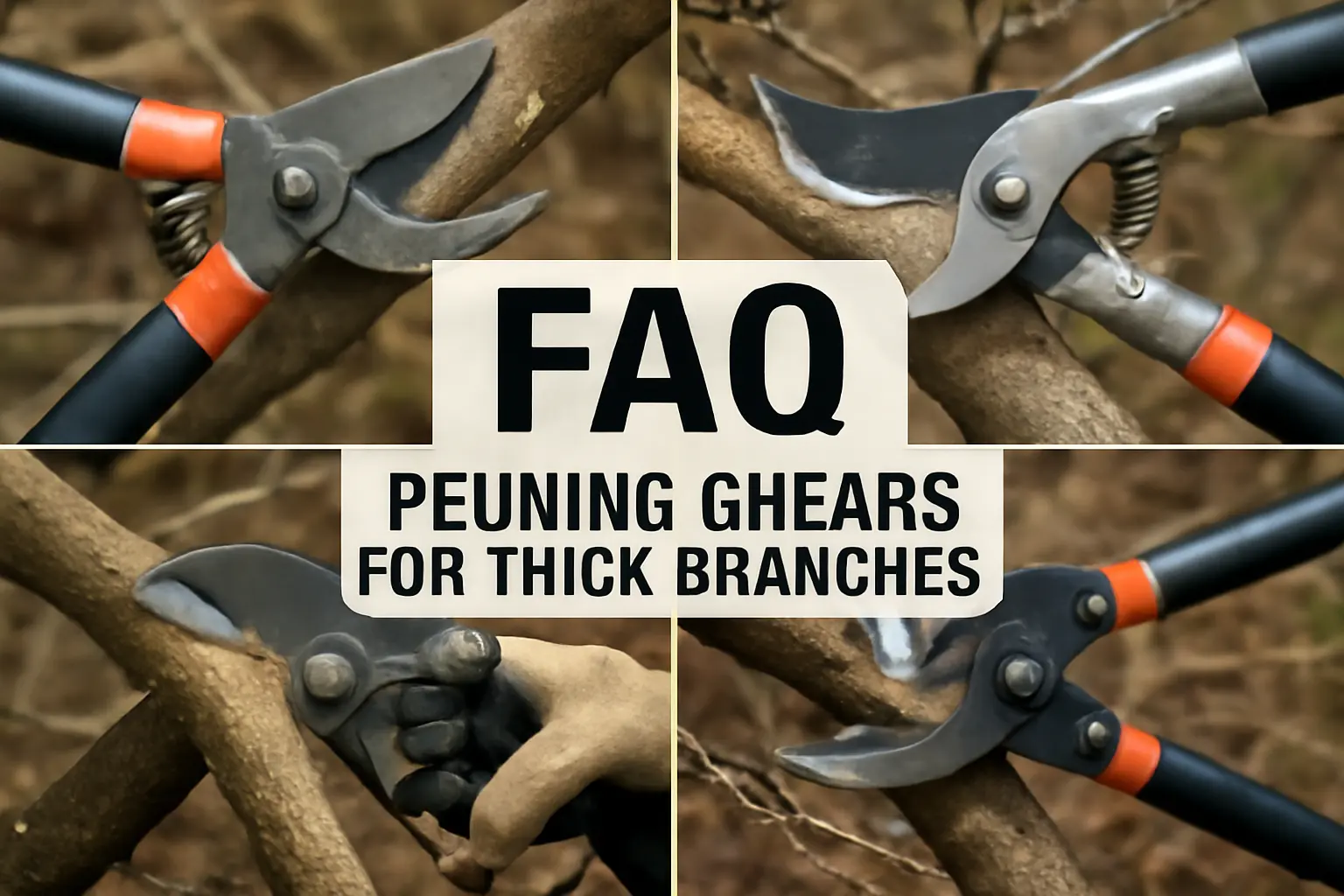
7. Frequently Asked Questions (FAQ) on Pruning Shears for Thick Branches
Maintenance is key to prolonging the lifespan of these tools—cleaning after use, sharpening blades regularly, and proper storage prevent rust and dullness. The distinction between bypass and anvil shears matters significantly: bypass shears cut like scissors, offering cleaner cuts ideal for live wood, whereas anvil shears crush through branches and suit dry or dead wood better.
To reduce hand fatigue when dealing with thick branches, ergonomic handles and shock-absorbing grips become essential. Utilizing the correct technique—cutting close to the branch collar and avoiding overexertion—also helps maintain comfort during extended pruning sessions.
Addressing these questions with practical advice ensures users select and maintain pruning shears that meet their gardening needs efficiently and safely.
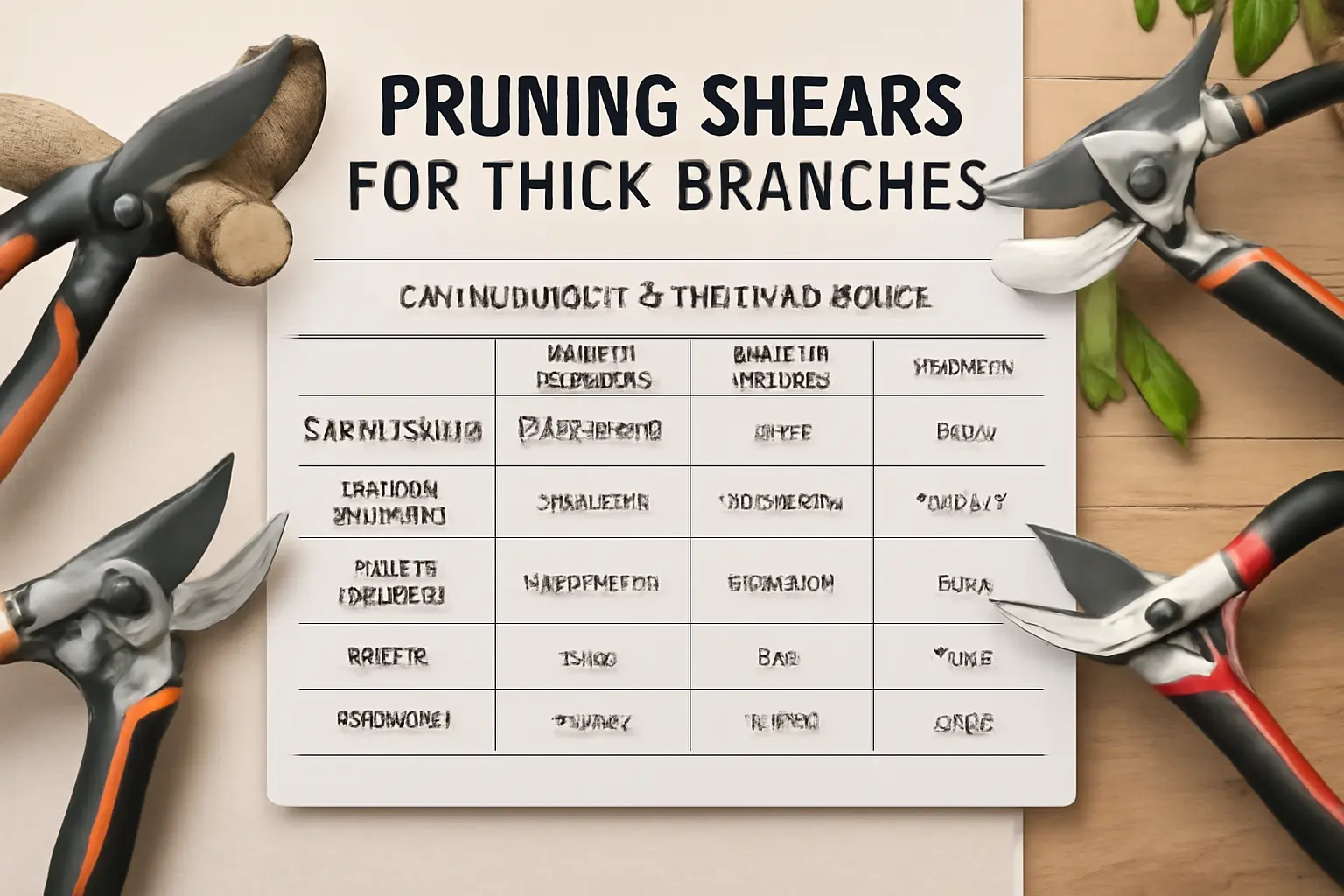
8. Visual Comparison and Feature Tables
Visual diagrams can effectively demonstrate cutting mechanics and techniques. Displaying the difference between bypass and anvil blades helps users understand which tool suits their thick branch needs better. Also, showing proper cutting angles reduces branch damage and improves plant health.
Using such visual aids combined with clear tables enables gardeners and professionals to quickly assess options based on branch thickness, tool durability, and ease of use, ensuring the best fit for demanding pruning tasks.
9. Where to Buy and Additional Resources
Additional resources enhance tool selection and maintenance knowledge. Expert blogs such as “Garden Tool Advisor” regularly share insights on pruning techniques and proper care to prolong tool life. Instructional videos from horticulturists demonstrate safer and more effective cutting methods, particularly with tough, woody stems. By consulting these materials and purchasing from well-reviewed retailers, gardeners ensure their pruning shears for thick branches meet durability and performance standards essential for vigorous garden upkeep.

